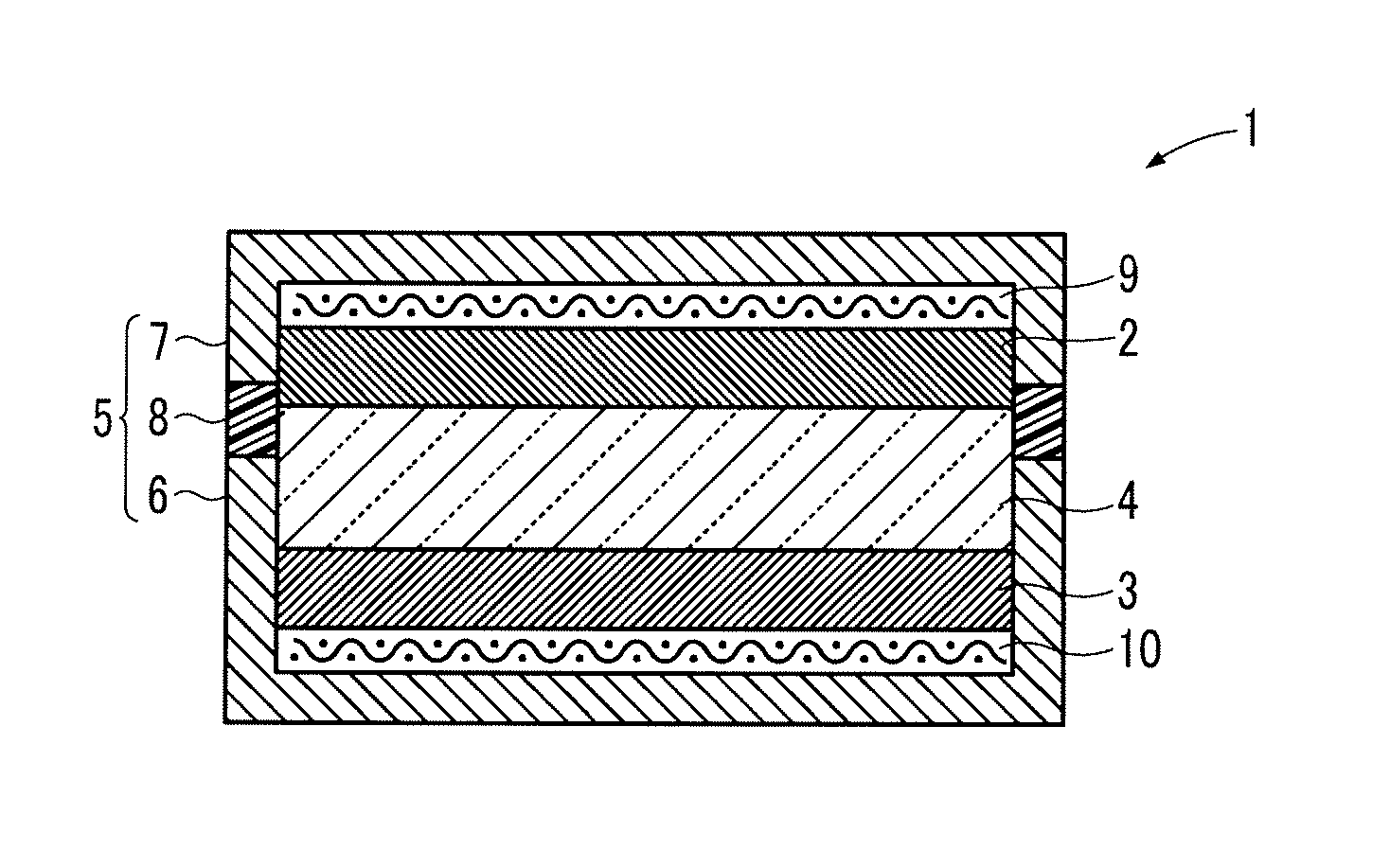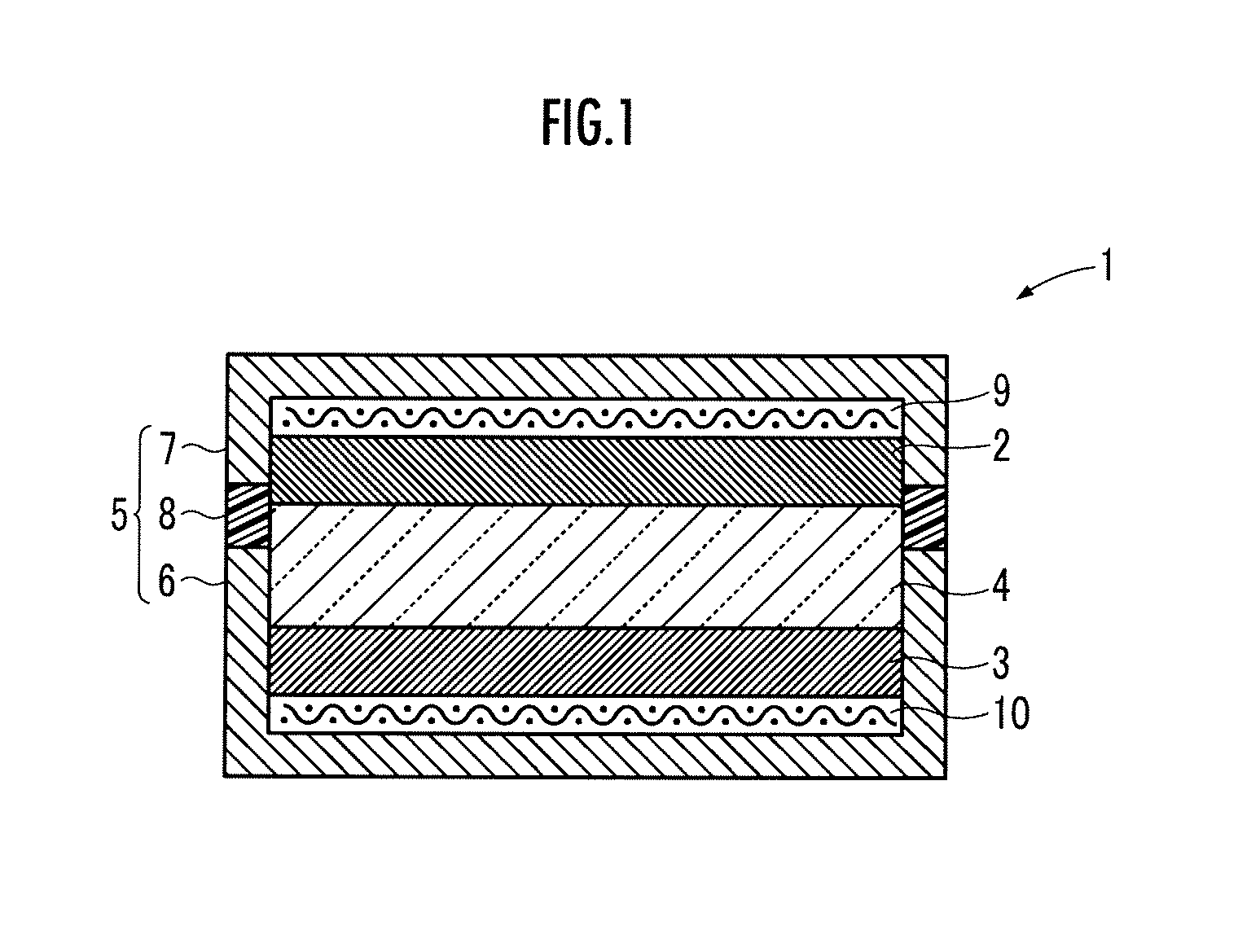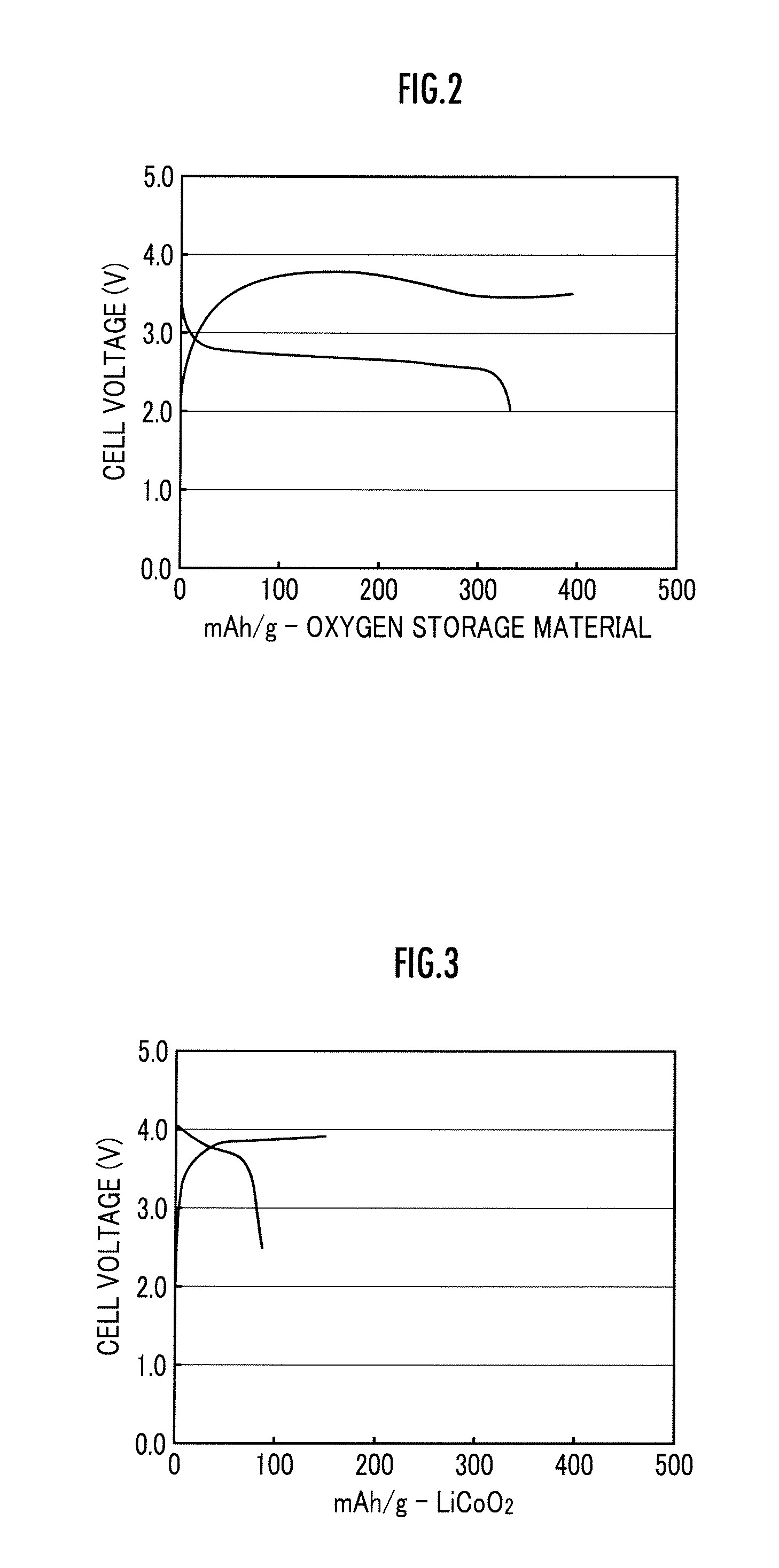Lithium ion oxygen battery
a technology of oxygen battery and lithium ion, which is applied in the direction of electrochemical generators, cell components, manganates/permanentates, etc., can solve the problems of insufficient increase of energy density per mass and less maintenance of cobalt oxide, so as to reduce reaction rate, reduce overvoltage, and reduce energy
- Summary
- Abstract
- Description
- Claims
- Application Information
AI Technical Summary
Benefits of technology
Problems solved by technology
Method used
Image
Examples
example 1
[0072]In the present Example, firstly, yttrium nitrate pentahydrate, manganese nitrate hexahydrate, and malic acid were pulverized and mixed at a molar ratio of 1:1:6 to obtain a material mixture for a combined metal oxide. Next, the obtained material mixture for a combined metal oxide was reacted at a temperature of 250° C. for 30 minutes, and furthermore, at a temperature of 300° C. for 30 minutes and at a temperature of 350° C. for 1 hour. Then, after pulverizing and mixing a mixture of a reaction product, the mixture was calcined at a temperature of 1000° C. for 1 hour to obtain a combined metal oxide represented by a chemical formula YMnO3.
[0073]Next, 40 parts by mass of the obtained YMnO3, 50 parts by mass of Ketjen Black (manufactured by Lion Corporation) as a conductive material, 10 parts by mass of polytetrafluoroethylene (manufactured by Daikin Industries, Ltd.) as a binding agent, and furthermore 80 parts by mass of lithium peroxide (manufactured by Kojundo Chemical Labor...
example 2
[0085]In the present Example, firstly, the combined metal oxide represented by the chemical formula YMnO3 was obtained in the same manner as in Example 1. Next, the obtained YMnO3 was reduction-treated at a temperature of 300° C.
[0086]Next, 80 parts by mass of the reduction-treated YMnO3, 8 parts by mass of Ketjen Black (manufactured by Lion Corporation) as a conductive material, 2 parts by mass of vapor grown carbon fiber (VGCF, manufactured by Showa Denko K.K.) as a conductive material, 10 parts by mass of polyvinylidene fluoride (manufactured by Kureha Corporation) as a binding agent, and 80 parts by mass of lithium peroxide (manufactured by Kojundo Chemical Laboratory Co., Ltd.) as a lithium compound were dispersed in 600 parts by mass of N-methyl-2-pyrrolidone to be mixed. The obtained mixture was applied to the positive electrode current collector 9 made of an aluminum mesh (manufactured by Clever Co., Ltd.) and dried to form the positive electrode 2 having a diameter of 15 mm...
example 3
[0094]In the present Example, firstly, the combined metal oxide represented by the chemical formula YMnO3 was obtained in the same manner as in Example 1. Next, the obtained YMnO3 was reduction-treated at a temperature of 300° C.
[0095]Next, 40 parts by mass of the reduction-treated YMnO3, 30 parts by mass of Ketjen Black (manufactured by Lion Corporation) as a conductive material, 30 parts by mass of an acrylic resin (manufactured by Zeon Corporation) as a binding agent, and 40 parts by mass of lithium peroxide (manufactured by Kojundo Chemical Laboratory Co., Ltd.) as a lithium compound were dispersed in 500 parts by mass of N-methyl-2-pyrrolidone to be mixed. The obtained mixture was applied to the positive electrode current collector 9 made of an aluminum mesh (manufactured by Clever Co., Ltd.) and dried to form the positive electrode 2 having a diameter of 15 mm and a thickness of 0.5 mm.
[0096]Next, 90 parts by mass of graphite (manufactured by Kureha Corporation) as a carbon ma...
PUM
| Property | Measurement | Unit |
|---|---|---|
| temperature | aaaaa | aaaaa |
| temperature | aaaaa | aaaaa |
| temperature | aaaaa | aaaaa |
Abstract
Description
Claims
Application Information
 Login to View More
Login to View More - R&D
- Intellectual Property
- Life Sciences
- Materials
- Tech Scout
- Unparalleled Data Quality
- Higher Quality Content
- 60% Fewer Hallucinations
Browse by: Latest US Patents, China's latest patents, Technical Efficacy Thesaurus, Application Domain, Technology Topic, Popular Technical Reports.
© 2025 PatSnap. All rights reserved.Legal|Privacy policy|Modern Slavery Act Transparency Statement|Sitemap|About US| Contact US: help@patsnap.com



